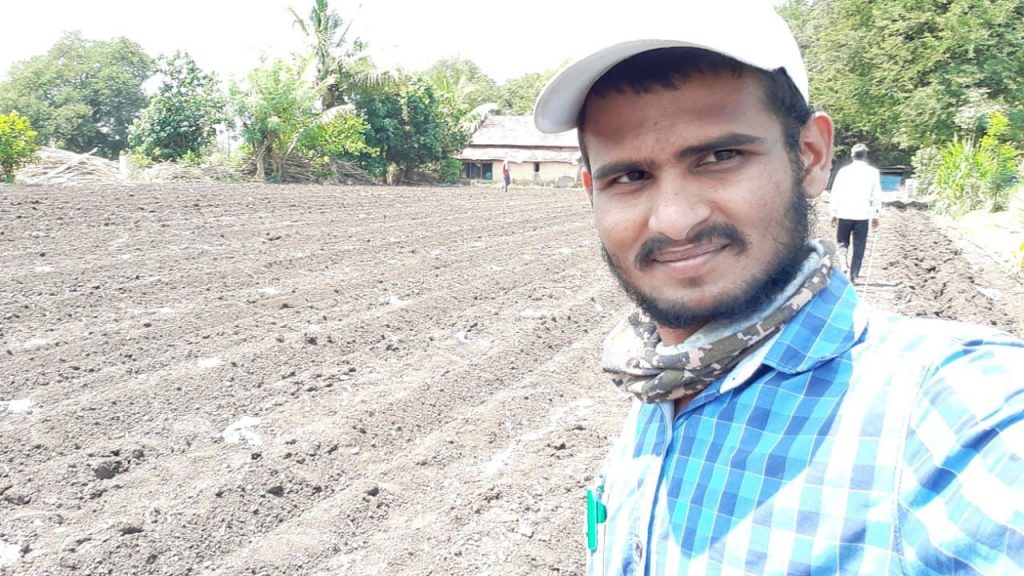What to eat?

Today is the 21st of the India-wide lockdown and it was supposed to be the last one. We just received a confirmation that the lockdown is now extended until the 3rd of May.
Over the past three weeks, several hundred thousand daily laborers and their families have tried to reach their native places using bicycles, motorbikes or even on foot. In the small villages there are no reporters, but we have several kantharis out there who provide daily updates.
To inform you about their challenges and targeted actions, we will continue both the blog posts, the Facebook video series and we will try to support those who are in existential need.
However, we must also ensure that we do not run out of food here. We are in the fortunate situation where we have a fishpond, a few ducks that lay a couple of eggs a day, and some jack fruit and coconuts hanging high up in the trees that need to be harvested. But the question is, by whom?
What is good, is that we know where our food comes from. This, however, is not the case for most eaters.
Last December, I remember how thoughtful, shocked, and perhaps a little disgusted the audience was as they stepped out of the kanthari talks event after watching Siddhesh’s closing speech. He addressed a huge problem that many people are not aware of. Of course, we all believe that we need vegetables to stay healthy, but the short film that Siddhesh showed made sure that we all lost our appetite. The film addressed the fact that many traders spray vegetables with silicone sprays and dye vegetables that are supposed to look green with textile paint to make them look more attractive. Have a look at Siddhesh’s dream speech and the video at kanthari talks here (http://youtu.be/54ohwNEqs_E)
Siddhesh, a kanthari graduate in 2019, did not only address this problem, he convinced the audience of a solution. A solution which he has partly put in place over the past three months.
So, who is Siddhesh?
Siddhesh comes from a farming family. His father took on debt to enable both him and his younger brother to study technology. But Siddhesh did not want to study, he preferred to become a farmer. However, his father was adamant.
In his speech, Siddhesh asks: “Why do doctors want their children to become doctors? Why do engineers want their children to follow in the same footsteps? But why is it, that farmers don’t want their children to become farmers?”
Siddhesh was a good student and he is smart, yet, like most peers, he couldn’t find employment. He however used his technical talent to design composting machines and mechanical irrigation systems. “I wanted to show my father that I am passionate about farming.” But his father remained stubborn: “Why don’t you become a beggar! Then you would earn more than I do!”
He could understand his father’s perspective. According to one study, a small farmer earns an average of 5000 rupees per month, or about 65 U.S. dollars. Most Indian small farmers are heavily indebted due to failed harvests, and every 30 minutes somewhere in India, a farmer commits suicide.
Siddhesh blames government-subsidized industrial agriculture. He collected soil samples from his village and had them tested. The ground was completely poisoned. “No fungal spores, no microbes, simply dead soil. It is no wonder that the harvests are worse every year.”
And although his father banned him from the house, he returned to his village after the kanthari program. He rented a hut where he now lives and started his organization Agro Rangers.
Like Lawrence from Nigeria and Neeraj from Bihar/India, Siddhesh wants to inspire young people from his village for a new, environmentally friendly agriculture. He also developed the concept of a “family farmer”.
A “family farmer” is something like the family doctor in Europe. We are talking about small farmers who do not own much land but can grow high-quality organic vegetables for about 40 families. Families pay a monthly low-priced fixed rate and receive what is being harvested. This allows customers to be sure that their vegetables are not ‘painted with chemical dye’, while ensuring that small farmers are financially protected because they save money from not having to buy pesticides and genetically modified seeds.
In order to grow organic farming profitably, however, a preparation period of several years is required. Siddhesh didn’t wait long. In January, he immediately began setting up a model farm with a composting plant and rainwater harvesting basins. Today, he uses the Corona Lockdown to convince bored youngsters that agriculture can be fun. Early in the morning they move to the fields, work together all day outside, and in the evening, they bring their harvest to the families in the village.
Siddhesh has clear plans for the future. Together with his young colleagues, they now want to gradually transform the entire village into an agricultural model project.
“I see it in front of me. As long as the local community doesn’t change their mind, then we will have patches where we grow a variety of vegetables in between fruit and walnut trees. We have fishponds and cows who provide dung that can be used as fertilizer. Each house will have its own Ecosan toilet, and we will also install biogas plants. Self-sufficient and small farmers will be ready to survive any lockdowns.”
“And your father? what does he say?” I hear Siddhesh sighing. ‘He doesn’t know anything. He probably doesn’t even know that I’m nearby.’
